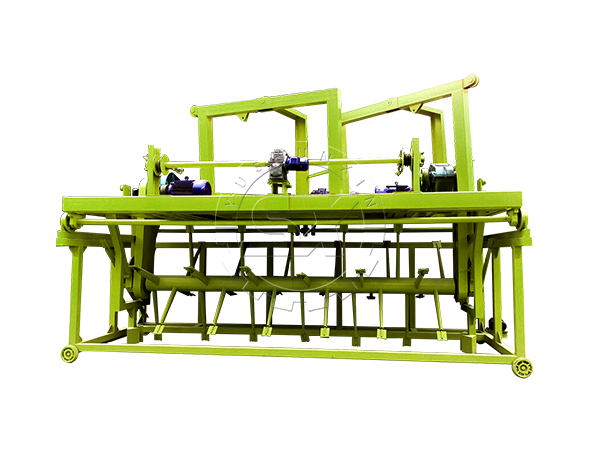The advantages and disadvantages of three fermentation modes of chicken manure
We all know that in response to the theme of green environmental protection, organic fertilizer equipment rely on animal manure to produce organic fertilizer. And animal manure must be processed before organic fertilizer is produced. Today we will talk about how to deal with chicken manure. There are mainly the following three ways:
- Direct drying mode
The main process of direct drying mode is to manually spread the chicken manure directly to air. After drying and crushing it, you can pack it directly for sale as a product. The advantages of this model are low product cost and simple operation. However, it also has the following problems:
- It covers a large area and pollutes the environment.
- There is still a problem of time and seasonality in dryingand it cannot be industrial produced continuously.
- The product is large in sizeand low in nutrients. And it still needs secondary fermentation. Therefore, the quality of the product is difficult to guarantee.
- Drying mode
In drying mode, its technological process is to directly dry the chicken manure through high temperature, heating, sterilization and drying. Finally, the dry chicken manure was produced with about 13% of moisture content, which is sold directly as a product.
There are also many manufacturers that adopt this model. The advantages of this model are:
- Large production volume and fast fermentation
- Stable quality of the product and low moisture content
But there are also some problems such as:
- Exhaust gas from the production process pollutes the environment.
- Energy consumption in the production process is high.
- Only the surface of the product is dry. And it still has a bad smell and secondary fermentation after soaking in water. The quality of product is also not reliable.
- The equipment investment is high andthe utilization rate is not high.
- The organic matter content in chicken manure is lost during processingso that the product is unqualified.
- Biological fermentation mode
Biological fermentation mode mainly has the following three fermentation modes:
1) Groove fermentation

The first step of groove fermentation is to mix chicken manure, grass charcoal and sawdust into a cement groove. And then you need to provide oxygen and put into nutrient-rich bacteria. After fermentation is completed, the product should be crushed and have second fermentation to increase nutrient content. Then there will be further processing like granulation and packaged into products after screening.
The advantages of this model are:
- The production process is simple and convenientwith low investment and production cost.
- In the secondary fermentation in the groove, harmless disposal is realized and the nutrient content of the raw materials is increased.
- In the turning and throwingof groove fermentation, the moisture content of the material can be controlled and reach a reasonable level.
- The continuous fermentation and uninterrupted productioncan be realized by taking advantage of the characteristics of groove fermentation. Therefore, an increase in production capacity and a high degree of industrial mass production can also come true.
This groove fermentation is more suitable for large, medium and small organic fertilizer composting.
2) Direct composting
The main process of direct composting is to make a pile about 1 meter high, through mixing chicken manure with straw or grass charcoal. And then it will be fermented by using high-temperature compost and periodically turning over. After fermentation, it can be used as a product. The advantages of this model are simple production process, low investment and low cost. And the main problems are:
- The product stacking time is too long andgreatly affected by various external conditions, so the quality of product is difficult to guarantee.
- The degree of continuous production in factory is not high and the production cycle is long.
3) Tower fermentation
The main process is to mix chicken manure with sawdust and other auxiliary materials, and then put into the biological bacteria agent. At the same time, the tower body is automatically ventilated. The biological growth is used to accelerate the fermentation and deodorization of chicken manure. After a fermentation cycle, the product is basically finished when the it comes out of the tower body.
This kind of tower model has the advantages of small footprint, low energy consumption, low pollution, lack of secondary fermentation and resulting in insufficient nutrition. However, its current problems are:
- Only relying on the biological heat generated by fermentation to remove moisture, the moisture content of the product does not meet the requirements of commercialization.
- The current process flow is not running smoothly, which causelabor costs to increase greatly and the output fails to meet the design requirements.
Through the above, it is not difficult for us to see that when choosing organic fertilizer fermentation compost equipment, we should choose trough fermentation as much as possible because of its many benefits and large output. In addition, you do not reduce the process when choosing groove fermentation, especially the secondary fermentation. The secondary fermentation time is only a few days, but it is of great significance. It has a great benefit on the nutrients and harmlessness of organic fertilizer.
